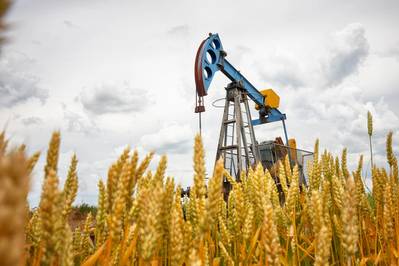U.S. oil drillers cut rigs this week for the first time since January and the pace of additions slowed this quarter due to declines in crude prices despite an OPEC-led effort to cut production and end a multi-year supply glut.
Analysts, however, noted the weekly decline in the rig count was likely just a brief pause in a drilling recovery expected to continue through at least 2019.
Drillers cut two oil rigs in the week to June 30, bringing the total rig count down to 756, still more than double the 341 rigs in the same week a year ago, energy services firm Baker Hughes Inc said in its closely followed report on Friday.
That decline followed a record 23 consecutive weeks of rig additions, according to Baker Hughes data going back to 1987. Drillers have added rigs in 52 of the past 57 weeks since the start of June 2016.
The pace of those additions, however, has slowed over the past few months with the decline in oil prices.
In the second quarter, drillers added 94 rigs, which is less than the 137 added during the first quarter.
For the first half of the year, or since the Organization of the Petroleum Exporting Countries began to curb output, U.S. drillers added 231 rigs, up from 195 in the second half of 2016. During the first half of 2016, drillers removed 206 rigs.
Crude oil prices, however, were on track for their worst first-half performance since 1998.
Lingering worries about oversupply have knocked around 15 percent off U.S. crude futures so far this year, despite a deal involving OPEC members and some other major producers to curb production by about 1.8 million barrels per day (bpd).
U.S. crude futures on Friday were trading almost $46 per barrel, putting the front-month on track for its first gain in six weeks.
Analysts said those OPEC-led cuts were being frustrated by rising output from U.S. shale drillers and other producers hoping to capture higher oil prices in future months.
U.S. shale oil producers said they plan to keep drilling new wells despite this month's crude price drop but expect to revisit spending should pricing remain below $45 a barrel for several months.
Pioneer Natural Resources Chief Executive Tim Dove said newer operating efficiencies allow his company - one of the biggest operators in the Permian Basin, the largest U.S. oilfield - to continue to drill more.
But if prices were to remain depressed for a longer term, "we can pare away and still be a growth company even in a $45 environment," he said.
Futures for the balance of 2017 were trading around $46 a barrel, while calendar 2018 was fetching almost $48 a barrel.
However, U.S. shale companies are drilling themselves into a deep hole as they are barely breaking even or losing money, costs are starting to rise and share prices are sliding, according to Reuters market analyst John Kemp.
Some analysts still maintained their forecasts for the rise in rig counts.
Analysts at Simmons & Co, energy specialists at U.S. investment bank Piper Jaffray, last week forecast the total oil and gas rig count would average 883 in 2017, 1,101 in 2018 and 1,212 in 2019. Most wells produce both oil and gas.
That compares with an average of 819 so far in 2017, 509 in 2016 and 978 in 2015. If correct, Simmons' 2019 forecast would be the most since 2014 when there were 1,862 active rigs. The rig count peaked in 2012 at 1,919, according to Baker Hughes.
(Reporting by Scott DiSavino; Editing by Marguerita Choy)














